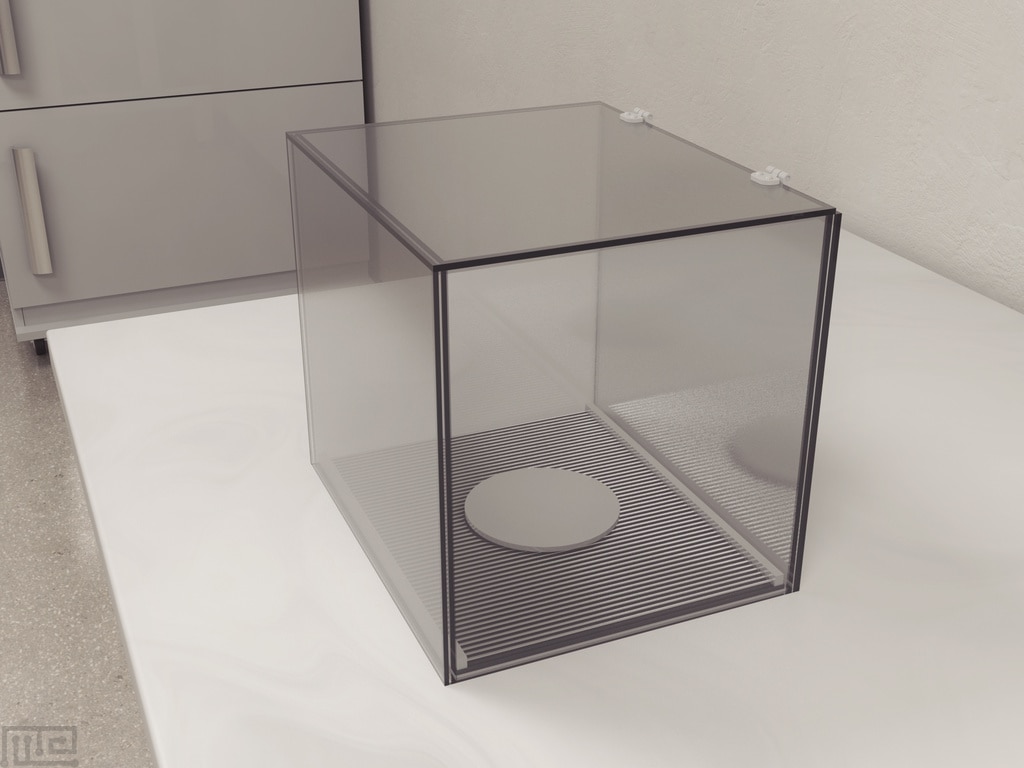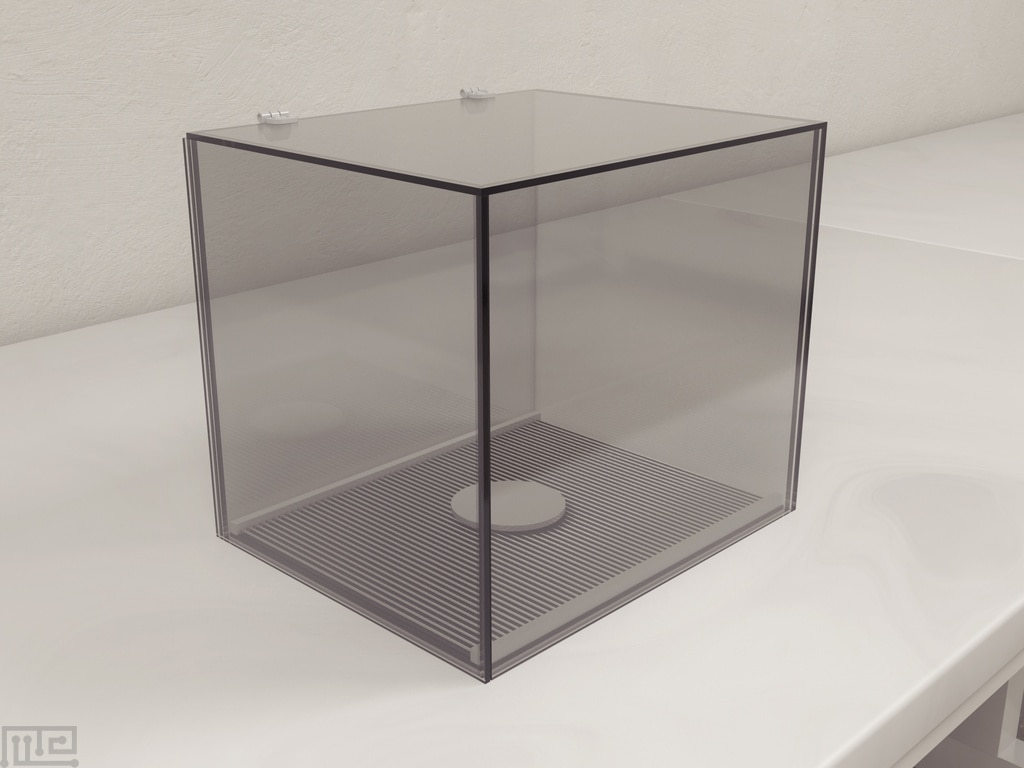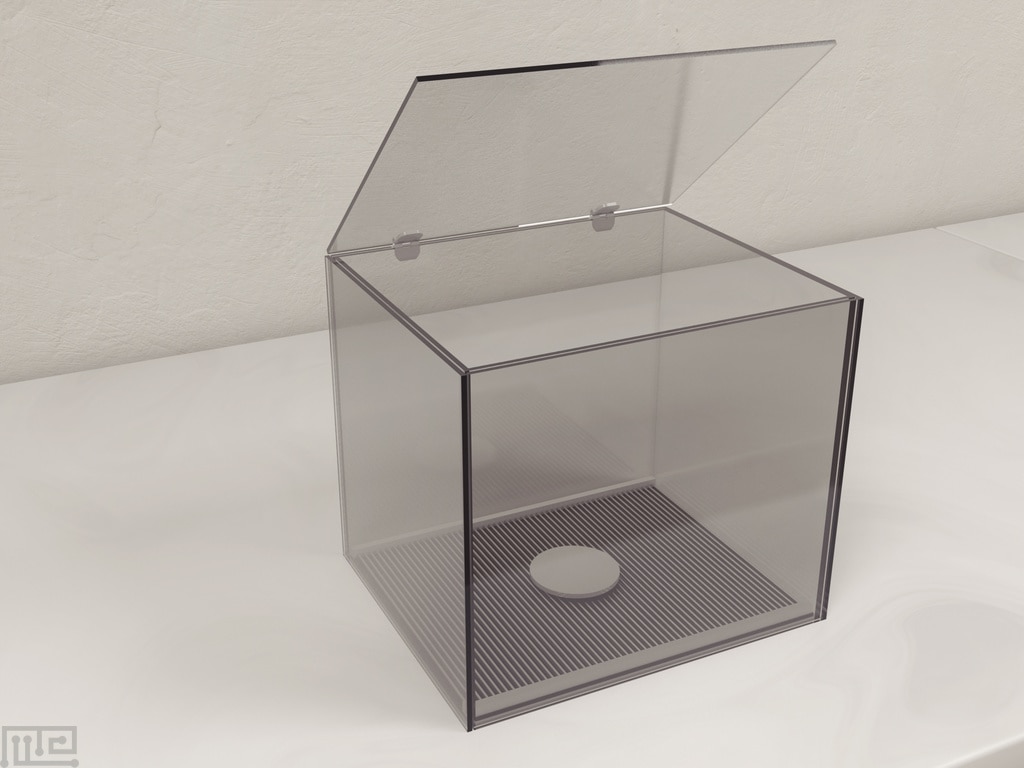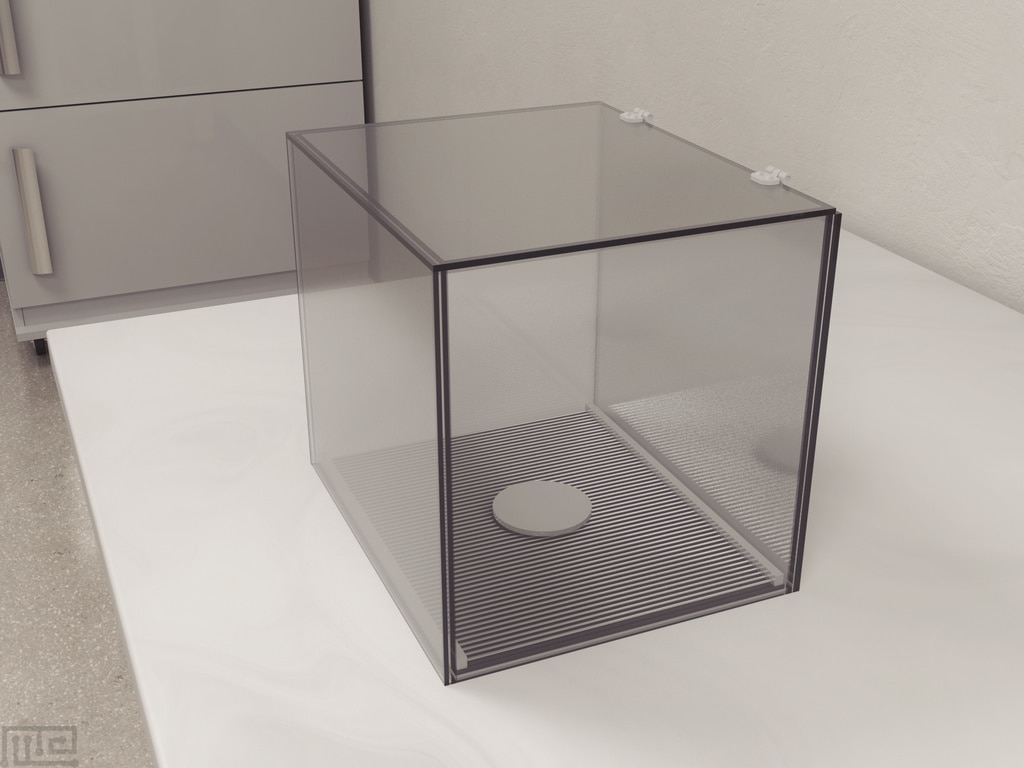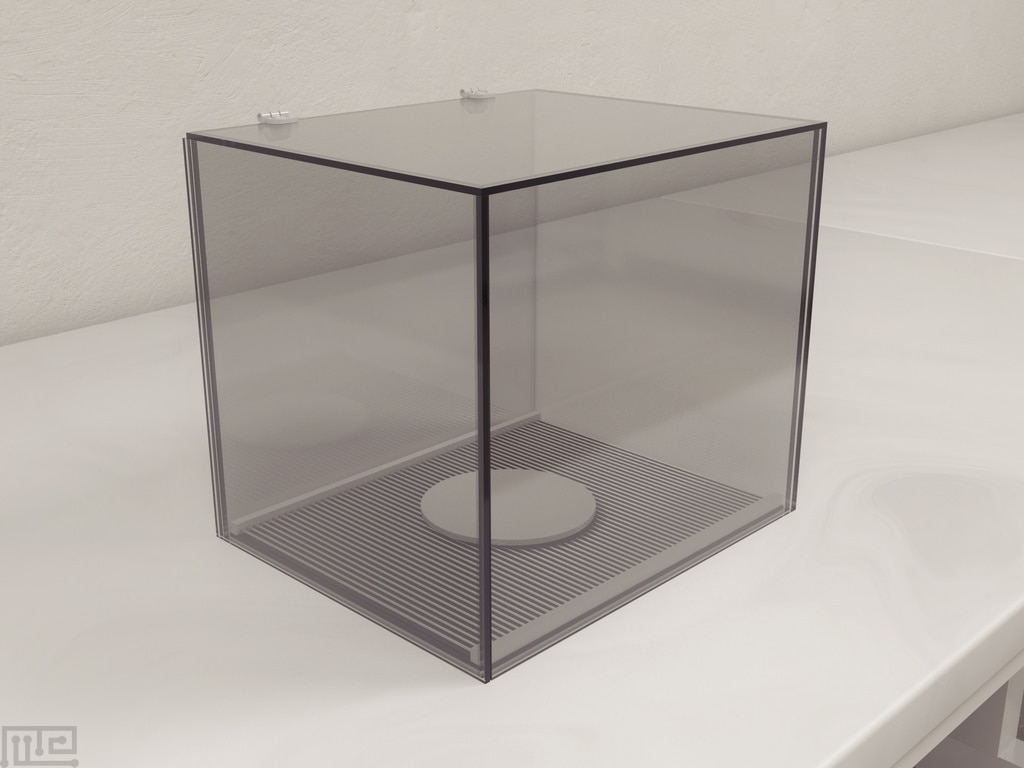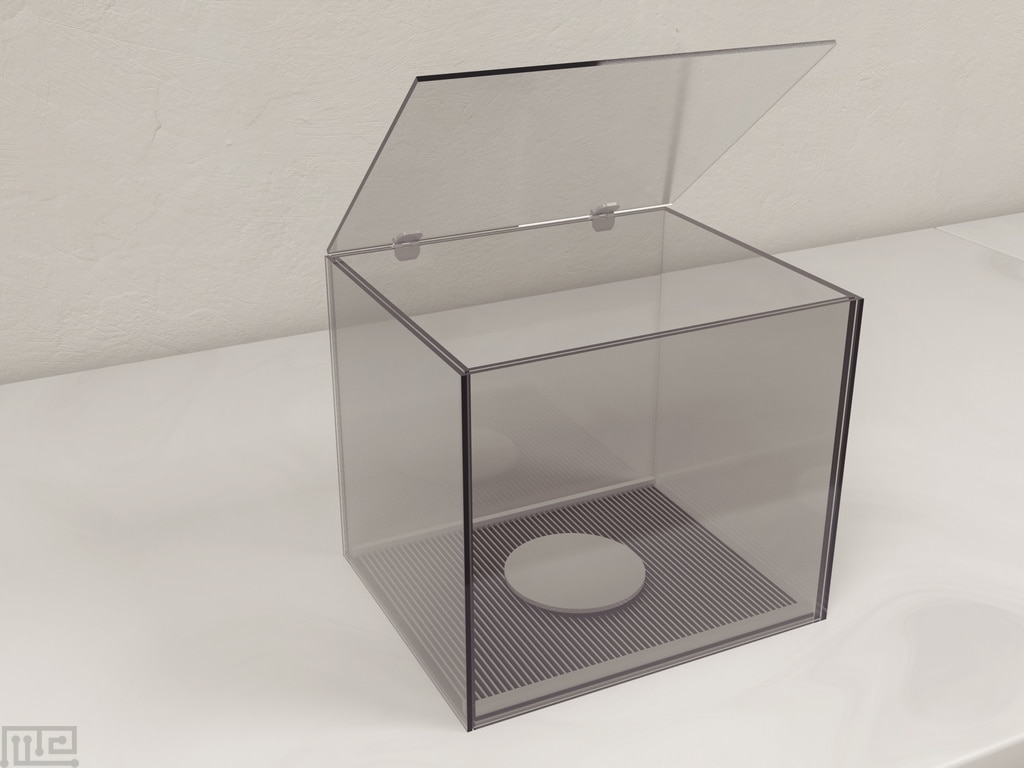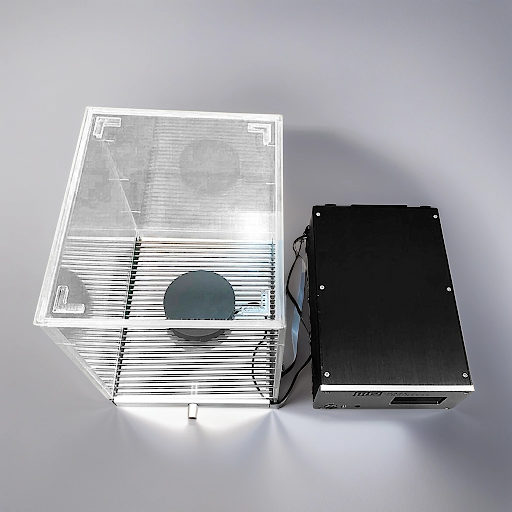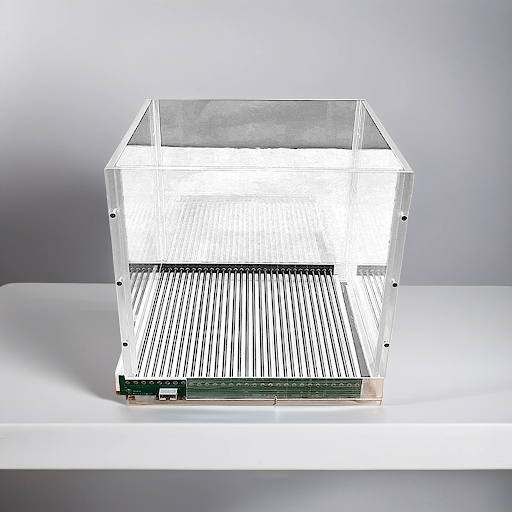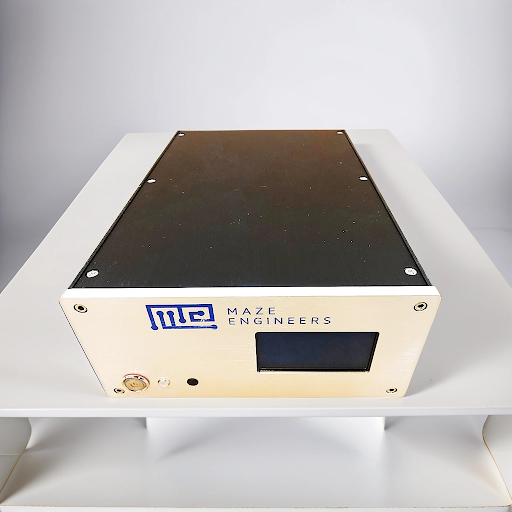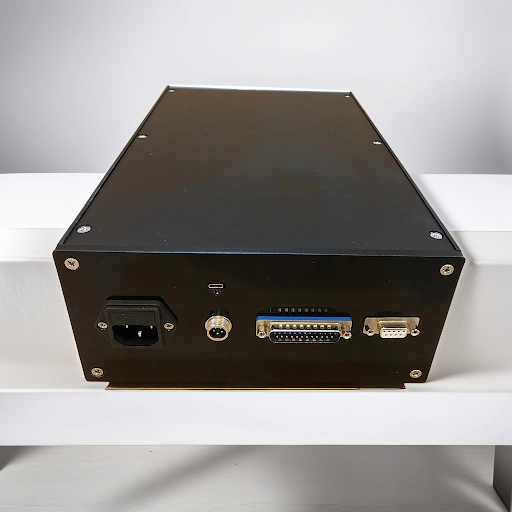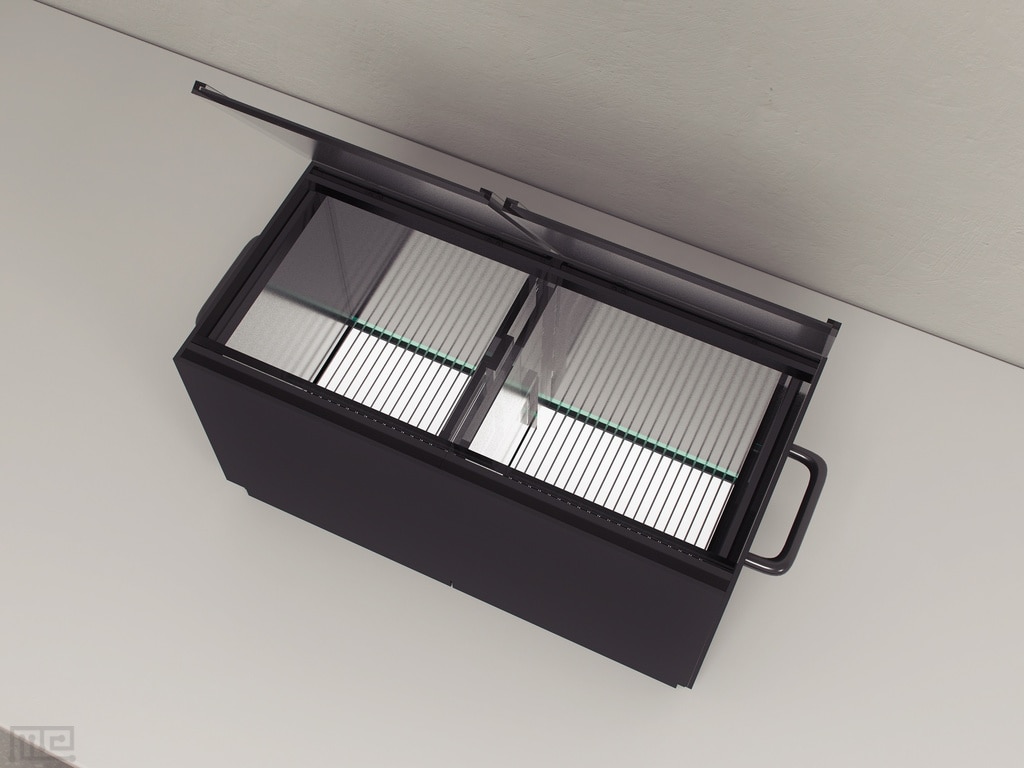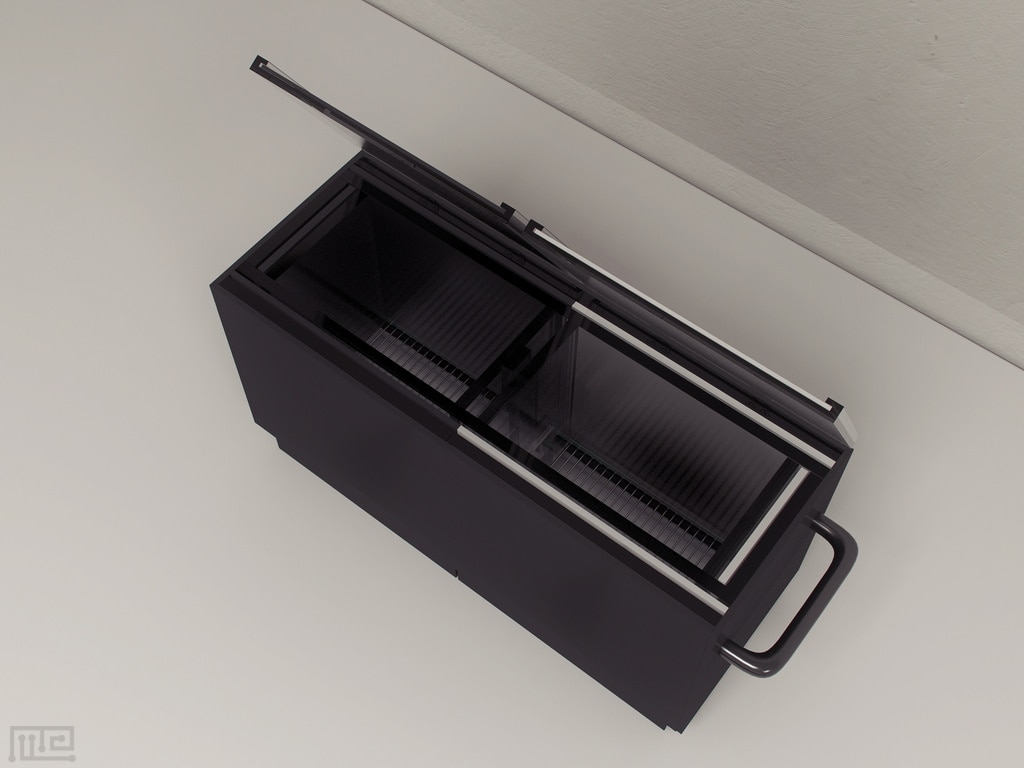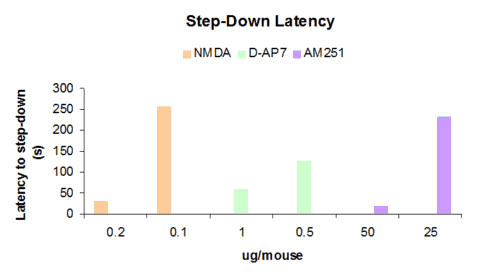Description
The step-down apparatus consists of a contextual Acrylic chamber with an electrified grid floor, with an elevated vibrating platform in the center.
The chamber encloses a removable grid floor and a central platform. The grid floor uses stainless steel bars of diameter approximately 0.3 cm spaced at about 0.8 to 1 cm apart. Direct current electric shocks (1 Hz, 0.5 s, 45 to 60V DC) are delivered to the grid floor by an isolated stimulator.
The apparatus can also include contextual plates having patterns to assist in contextual learning experiments. The central platform can also be attached to an actuator that forces the platform to shake. The platform is connected to an actuator that forces the platform to shake. When the animal steps off of the platform to the electrified grid, the platform stops its vibration, and the software counts the latency to step down.
Features
Contextual Plates
- Easy to replace acrylic plates with multiple contexts allow for contextual learning experiments. Please inquire for additional patterns, which are available upon request.Default Patterns
- Grey
- White
- Black
- Chessboard
- Vertical Stripes
Software
- The user can choose one of the 3 software options to control the maze:
- Our stand-aline Conduct Avoidance Step-Down software can be used to configure and run experiments
- Our ConductVision video tracking and analysis software package
- Our adapter software connects to video tracking software such as Noldus EthoVision or ANY-Maze
- 1 software package can support up to 16 units
Vibration
-
The vibration intensity range: 10 – 90Hz, in 10 steps (10Hz each)
Shock
- 0.1-4.0mA in 0.1mA steps
- DC Current.
- Removable Grid
Price
Mouse Step Down Avoidance
$ 5990
Per Month- Vibrator
- Shocker
- 1 Enclosure
-
2 Platforms: 7cm, 11cm platform
Rat Step Down Avoidance
$ 6490
Per Month- Vibrator
- Shocker
- 1 Enclosure
-
2 Platforms: 7cm, 11cm platform
Dimensions
Mouse Contextual Cage
- Length: 28cm
- Width:: 23cm
- Height: 26cm
- Acrylic Plate Designs:
- Striped, Chessboard, Grey , White, Black
Rat Contextual Cage
- Length: 42cm
- Width:: 35cm
- Height: 39cm
- Acrylic Plate Designs:
- Striped, Chessboard, Grey , White, Black
Need tracking software?

CONDUCTVISION:
Behavorial Analysis of the Future
Highly advanced AI Technology designed to analyze only the most rodent behavorial movements.
See our related products
Documentation
Introduction
Hudson B. B. in the 1950’s developed a one-trial Inhibitory Avoidance Task (IAT) that tested the retention of memory and avoidance response in household mice. The subjects received electric shocks when they approached the baited visual cues and were observed for their subsequent response to the same setting. The observations showed the impact of the first experience in fear learning and avoidance. This task, since then, has seen many adaptations and variations. One such variation is the Step-Down Avoidance task.
Just like its predecessors, the Step-Down Avoidance task investigates the subject’s aversive memory. When the subject is confronted with an aversive stimulus, it gathers the information as part of fear learning. When the subject is tested under the same conditions again, regardless of the presence or absence of the aversive result, the subject’s retention memory comes into play. The longer the retention latency, the better the memory. Thus, this simple task sets straightforward parameters for learning and memory performance.
The Step-Down Avoidance apparatus has a very basic construction using a clear Acrylic chamber with an electrified grid floor that has an elevated vibrating platform in the center. When the subject steps off the platform, it receives a shock from the electrified grid floor. The task uses step-down latency and retention latency as measures of aversive learning and memory.
Apparatus and Equipment
The test chamber is usually of dimension 28 x 23 x 26 cm and encloses a removable grid floor and a central platform. The grid floor uses stainless steel bars of diameter approximately 0.3 cm spaced at about 0.8 to 1 cm apart. Direct current electric shocks (1 Hz, 0.5 s, 45 to 60V DC) are delivered to the grid floor by an isolated stimulator. The central platform can either be a 4 x 4 x 4 cm square platform or an 8 cm diameter platform of 4 cm thickness.
The apparatus can also include contextual plates having patterns to assist in contextual learning experiments. The central platform can also be attached to an actuator that forces the platform to shake.
Training Protocol
To ensure that the test results are accurate, the apparatus must be cleaned thoroughly before and after every trial. A video and tracking software such as the Noldus Ethovision XT or ANY-Maze can be used to observe the movements of the subject in the apparatus. The Step-Down Avoidance task is carried out in two steps as follows:
- Training: The subject is placed gently on the central platform in the chamber. When the subject steps down from the platform onto the grid with all four paws, an electric shock is delivered continuously until it returns to the platform to escape the aversive stimulus. Step-down latency and escape latency are recorded. Generally, for substance tests, the subject is treated with the substance immediately after the training.
- Retention test: The retention test is usually carried 24 hours after the training session. The subjects are placed on the central platform again. Step-down latency is recorded. The subject is observed until the cutoff time. Regardless of the activity of the subject, it is placed in the corner of the chamber with its tail towards the platform. An electric shock is given, and the escape latency is also recorded.
The Step-Down Avoidance Task is a simple tool for measuring aversive memory and learning. Since memory is intangible, its presence is observed by behavioral responses following an experience. Substances can have an impact on how an experience is viewed by the subject and on the retention capabilities. Neurodegenerative disorders and other neurological disorders can also significantly impact learning and memory.
Evaluation of voltage-dependent changes in the retention of passive avoidance- and escape-learning responses
During the training session, the subjects are delivered varying strengths of electric shocks (0, 30, 45, and 60 V) and after 24 hours are observed for passive avoidance and escape learning response in the retention task. (Kameyama et al., 1986)
Sample Data
Data collection with the Step Down Avoidance task is straightforward. Two parameters are measured during the task: Step-down latency and Escape latency. The experience in the training session affects the step-down latency and the escape latency in the retention test. These two parameters serve as an excellent measure of aversive learning and memory.
Strengths & Limitations
The Step-Down Avoidance apparatus is straightforward to use. The electrified metal flooring allows variations of voltage and duration of the electric shock administered to the subject. The task does not require any additional stimuli or cues; however, acrylic contextual plates with different patterns can be used to adapt the test for contextual learning. The task can also be used in conjunction with other behavioral tests to investigate different aspects of memory and learning. The step-down latency and escape latency provide an excellent measure of fear learning and memory. The task also assists in understanding the effects of substances on the aversive learning and memory of the subjects. It can also be used for studies related to neurodegenerative and other neurological disorders.
As with any behavioral tasks, the subject’s mental state plays an important role in achieving correct results. Overtraining or over-handling can also lead to erroneous results. The voltage and duration of the electric shock, if not within a limit, can also potentially impact the subject’s performance or harm the subject.
Summary and Key Points
- The Step-Down Avoidance task is a simple task used for measuring aversive memory and learning
- The apparatus is composed of a clear chamber with electrified grid flooring and a central platform
- When the subject steps down the central platform onto the grid floor with all four of its paws, a continuous electric shock is given
- The Step-Down latency and Escape latency are good parameters for measuring fear learning and memory
- Effects of substances, neurodegenerative diseases, and other neurological disorders on aversive learning and memory can be easily investigated using this apparatus
- The apparatus is easy to use, and the tasks are straightforward


